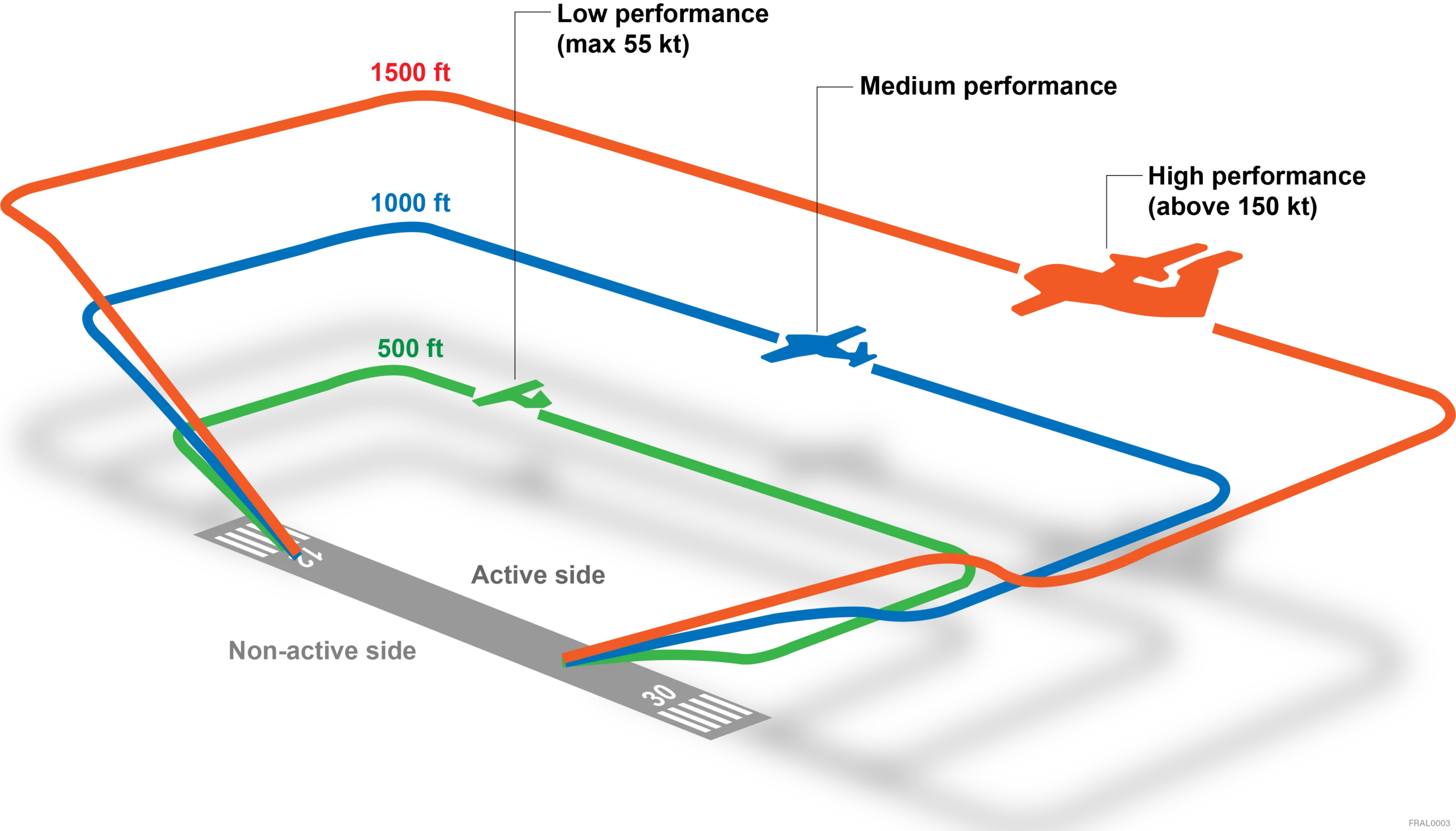Standard circuit procedures
In a standard aerodrome traffic circuit pattern, all turns are made to the left (unless stated in ERSA FAC). When an aircraft is arriving to land at an aerodrome, the pilot will normally join the circuit upwing, crosswind or downwind. Landings can be made straight-in but must give way to traffic already established in the circuit. Further, take-offs and landings should be made into the wind.
Note: at many aerodromes, the traffic pattern changes based on the time of day (daytime or nighttime). This is due to terrain, obstructions or noise abatement issues.
Maximum speed
The maximum speed in a circuit is no more than 200 kt.
Circuit heights
Aircraft should fly the standard traffic circuit where operationally able.

| Type of aircraft | Standard circuit speed | Standard circuit height |
|---|---|---|
| High performance (includes jets and many turboprops) | Above approximately 150 kt | 1,500 ft above aerodrome elevation |
| Medium performance (includes most piston engine aircraft and gliders) | Between approximately 55 kt and 150 kt | 1,000 ft above aerodrome elevation |
| Low performance (trikes and ultralight aircraft) | Approximately 55 kt maximum | 500 ft above aerodrome elevation |
Takeoff
After take-off, and during the initial climb-out, the pilot should turn the aircraft onto crosswind at a height appropriate to the performance of the aircraft. This is normal or above 500 ft above the terrain.
Final approach
The pilot should turn the aircraft into the final approach at a distance and height that is common to all operations at a particular aerodrome, and commensurate with the speed flown by other aircraft in the circuit for the same type. The pilot should stabilise the aircraft onto final no less than 500 ft above the aerodrome elevation.
Circuit variations
Common variations of the circuit include:
- the aircraft performance;
- AFM/POH performance requirements;
- company standard operating procedures; and/or
- safety reasons (i.e. terrain).
Departing the circuit area
The pilot should depart the aircraft from the circuit by extending one of the standard legs or climbing to depart overhead (whilst broadcasting intentions). The pilot should not execute a turn to fly against the circuit direction unless the aircraft is outside and clear of the circuit area, given that no traffic conflicts exist.